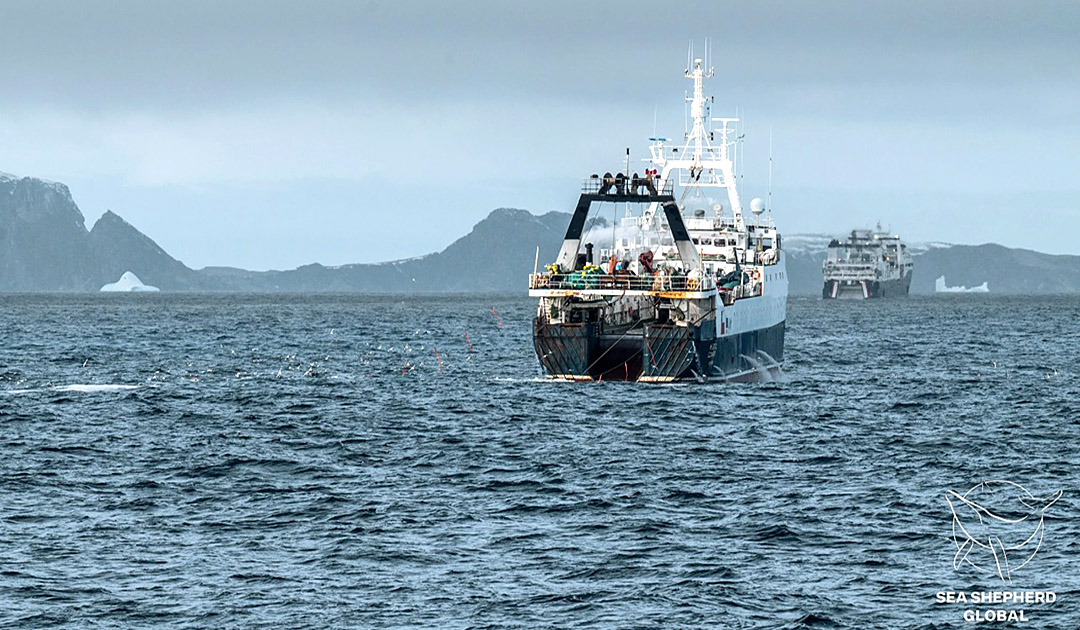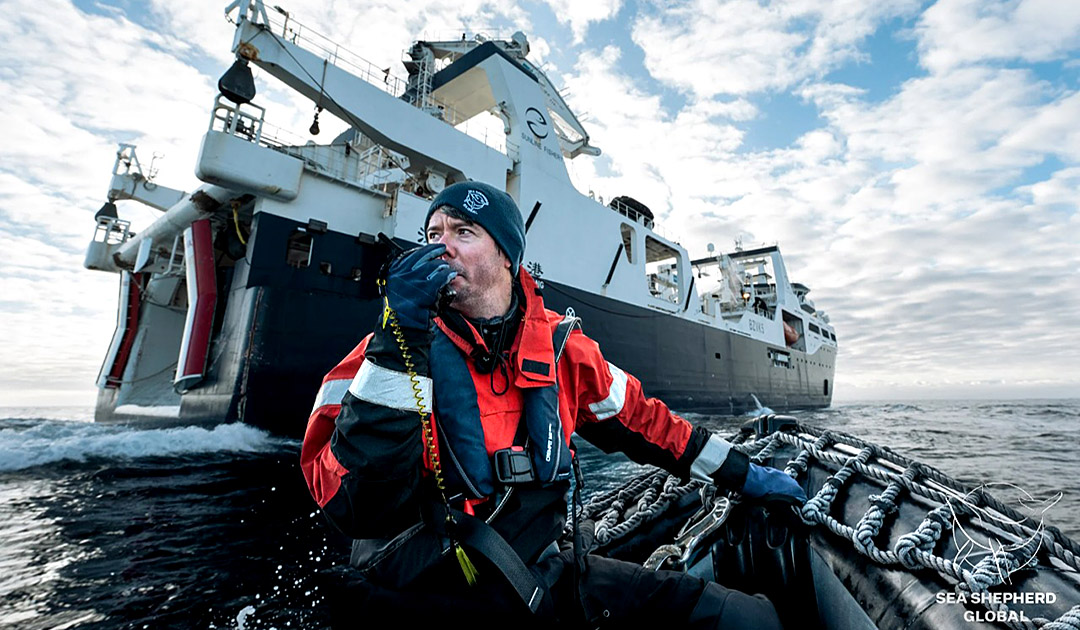
Antarctic krill(Euphausia superba) is at the center of the Antarctic food chain. It has a circumpolar distribution and is found in large quantities in the Southern Ocean. Krill is one of the key species of the sensitive Antarctic ecosystem. The small crustaceans form over 90% of the main food source for whales, penguins and seals living there. A recent survey conducted in the Southwest Atlantic, home to more than 50% of the Southern Ocean krill population, found that krill densities in this region have declined significantly since the 1970s.
One reason for this is the fishing of krill with trawling nets. More efficient fishing methods mean that an additional 100,000 tons of food are ‘lost’ for marine life. It is not only a lack of food that puts whales in danger, but also ruthless fishing methods that can entangle marine mammals in nets. This inevitably means their death.

On March 06, 2023, the environmental organization Sea Shepherd Global discovered two super trawlers with their massive nets plowing through a massive whale pod of over a hundred fin whales as they fed on krill off the South Orkney Islands in Antarctica.
“The two supertrawlers made no effort to change course. In fact, it looked like they were deliberately heading for the hunting whales because they knew that where there are whales, there must be krill,” said Captain Peter Hammarstedt from aboard Sea Shepherd Global’s newest vessel, Allankay.

The shocking images were captured on the first day of Sea Shepherd Global ‘s arrival in the Southern Ocean for their latest campaign. Operation Antarctica Defense is a mission to combat the greatest ecological threat to the Antarctic ecosystem by monitoring the fishing activities of a growing fleet of trawlers targeting vital krill populations.
Krill, a small shrimp-like crustacean, grows to about 6 cm in size and weighs only 2 grams and is likely to live up to 6 years. Krill forms the foundation of the entire Antarctic ecosystem and is the primary food source for baleen whales and penguins, with most marine life directly dependent on krill as a food source.

With the international decline of whaling, krill fishing has taken its place, with 12-14 industrial trawlers not directly targeting whales, but krill on which the animals depend for survival.
Captain Peter Hammarstedt: “We are seeing a sharp decline in pregnancy in humpback whales, a decline in body mass of fur seals, and a decline in populations of chinstrap penguins. All three species rely on krill as their primary food source. Among other things, climate change has reduced both the amount and duration of sea ice that krill need to survive.”

In 2021, the deaths of three whales – in three separate events – were documented in krill trawls, highlighting the growing conflict between fishing vessel operators and whales hunting the same krill.
Three weeks ago, Ecology magazine published a Stanford University study that revealed four large fishing vessels fishing for krill through a supergroup of more than 1,000 fin whales. The study concluded that this type of competition between krill fishermen and whales will increase in the future.
Cruise tourists watch whale spectacle
Large aggregations of whales were first observed by the early whalers, nowadays by tourists. The passengers of an expedition ship experienced a special day last southern summer. Hundreds and hundreds of whales as far as the eye could see! Around 1,000 fin whales, experts estimate, gathered near Coronation Island (South Orkneys) in Antarctic waters for a veritable feeding frenzy. In huge groups they poked out of the water to feed on krill.
Krill products
Krill is now extensively utilized nowadays: Krill extracted from the Southern Ocean is mainly used to produce krill meal, a feed additive in the aquaculture industry, but also to produce krill oil for the mass production of omega-3 food supplements. In Asia, products made from krill are considered a delicacy. Krill is also used in the cosmetics industry, for drug production and in alternative medicine.
Modern krill fishing vessels install a vacuum hose at the end of their trawl net to allow the vessel to fish around the clock, while ensuring that krill are not crushed to death when the net is otherwise dragged on deck.
Heiner Kubny, PolarJournal
Sea Shepherd website





